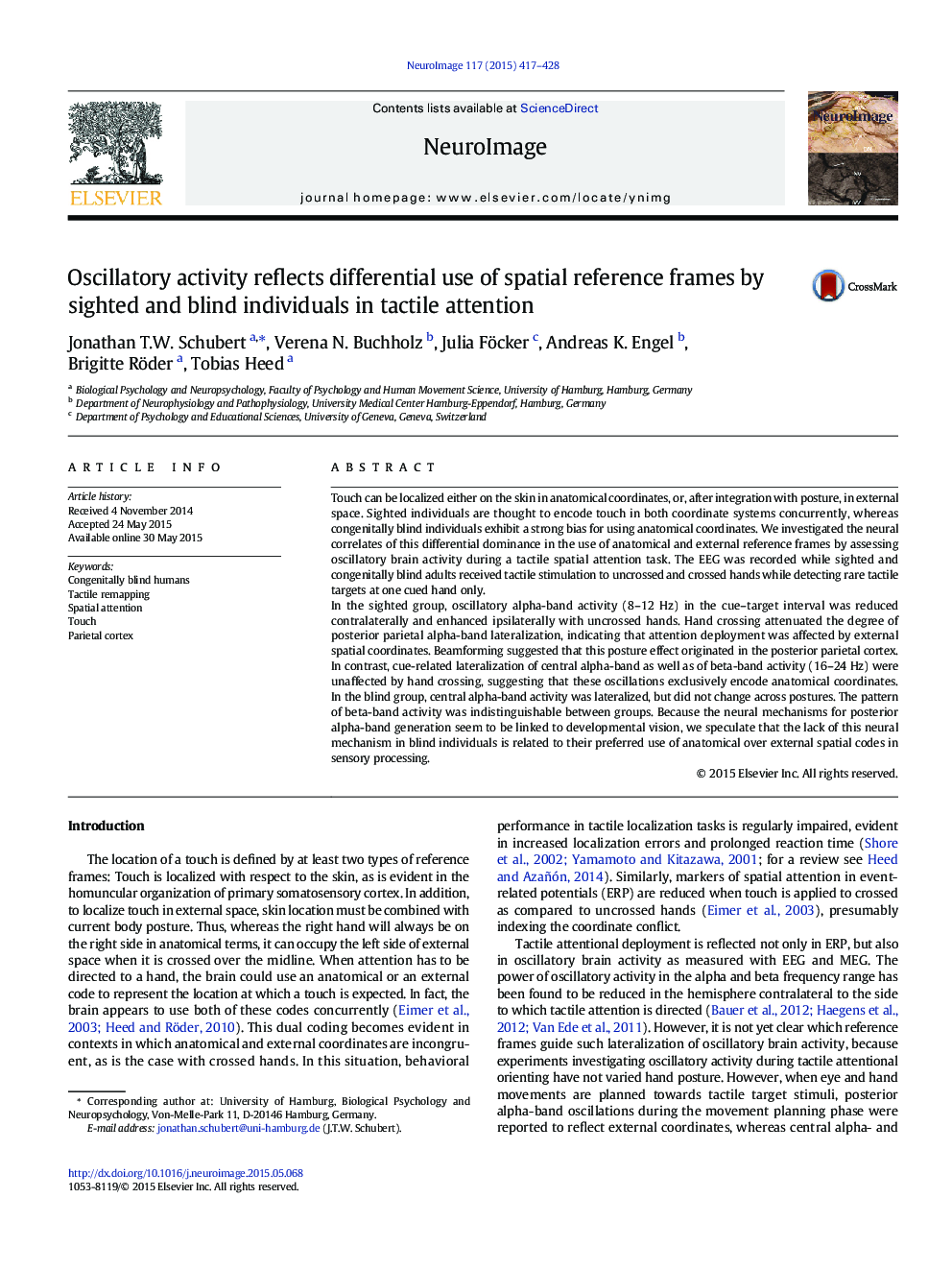| کد مقاله | کد نشریه | سال انتشار | مقاله انگلیسی | نسخه تمام متن |
|---|---|---|---|---|
| 6025065 | 1580890 | 2015 | 12 صفحه PDF | دانلود رایگان |
- Alpha and beta-band activity reflect different reference frames for tactile attention.
- Developmental vision critically modulates the reference frames for tactile spatial coding.
- Parietal alpha-band activity reflects external coding in sighted humans.
- Parietal alpha-band activity reflects anatomical coding in congenitally blind humans.
- Beta-band activity reflects anatomical coding in both groups.
Touch can be localized either on the skin in anatomical coordinates, or, after integration with posture, in external space. Sighted individuals are thought to encode touch in both coordinate systems concurrently, whereas congenitally blind individuals exhibit a strong bias for using anatomical coordinates. We investigated the neural correlates of this differential dominance in the use of anatomical and external reference frames by assessing oscillatory brain activity during a tactile spatial attention task. The EEG was recorded while sighted and congenitally blind adults received tactile stimulation to uncrossed and crossed hands while detecting rare tactile targets at one cued hand only.In the sighted group, oscillatory alpha-band activity (8-12Â Hz) in the cue-target interval was reduced contralaterally and enhanced ipsilaterally with uncrossed hands. Hand crossing attenuated the degree of posterior parietal alpha-band lateralization, indicating that attention deployment was affected by external spatial coordinates. Beamforming suggested that this posture effect originated in the posterior parietal cortex. In contrast, cue-related lateralization of central alpha-band as well as of beta-band activity (16-24Â Hz) were unaffected by hand crossing, suggesting that these oscillations exclusively encode anatomical coordinates. In the blind group, central alpha-band activity was lateralized, but did not change across postures. The pattern of beta-band activity was indistinguishable between groups. Because the neural mechanisms for posterior alpha-band generation seem to be linked to developmental vision, we speculate that the lack of this neural mechanism in blind individuals is related to their preferred use of anatomical over external spatial codes in sensory processing.
Journal: NeuroImage - Volume 117, 15 August 2015, Pages 417-428
